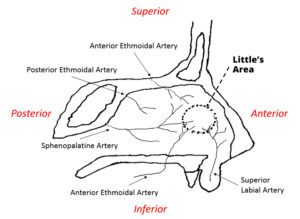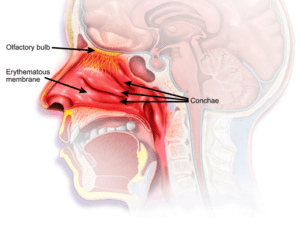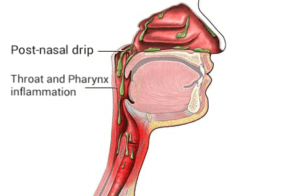Symptoms of Septal Perforation
Symptoms of Septal perforation can vary widely, encompassing a spectrum of manifestations that are influenced by critical factors such as the size and precise location of the perforation within the nasal septum. The severity of symptoms is intricately connected to the extent of structural compromise and disruption caused by the perforation. Some individuals may experience relatively mild symptoms, while others may grapple with more pronounced and distressing manifestations.
1. Whistling Sounds During Breathing
The alteration in airflow resulting from the septal perforation can induce a distinctive whistling sound during breathing, which is commonly experienced by patients. This phenomenon occurs as a direct consequence of the breach in the septum, disrupting the normal flow of air through the nasal passages.

2. Nosebleeds
The delicate blood vessels that become exposed within the septal perforation present a vulnerability that can result in frequent episodes of nosebleeds. The compromised structural integrity of the septum, combined with the fragility of the exposed blood vessels, makes them more prone to rupture and bleeding. This recurrent occurrence of nosebleeds is a direct consequence of the compromised protective barrier provided by the septum.

3. Foul-Smelling Nasal Crusts
The area exposed within the septal perforation has the potential to develop crusts, which are dried accumulations of blood, mucus, and other nasal secretions. These crusts can not only be physically uncomfortable but may also contribute to an unpleasant odour. The combination of dried biological materials within the perforation can lead to the formation of malodorous crusts, causing discomfort to the individual affected by this condition.

4. Recurrent Infections
The compromised nasal structure associated with septal perforation creates a vulnerable environment, heightening the susceptibility of patients to recurrent infections. The breach in the septum provides an entry point for pathogens, increasing the likelihood of bacterial or viral infiltration and subsequent infections. This recurrent nature of infections can significantly impact the overall health and well-being of affected individuals.

5. Nasal Congestion
Septal perforation contributes to nasal congestion, presenting a challenge for patients in achieving normal and unobstructed airflow. The altered nasal anatomy disrupts the smooth passage of air, leading to a sensation of blockage and congestion. Patients often find it difficult to breathe comfortably, and the persistent congestion can be a source of considerable discomfort and impairment in daily activities.

6. Sinusitis
The presence of a septal perforation is linked to an increased risk of chronic sinusitis, characterised by inflammation of the sinuses. The altered nasal anatomy, coupled with potential complications from recurrent infections, contributes to the persistent and often recurring nature of sinusitis in affected individuals. Managing this condition involves addressing both the septal perforation and associated sinus inflammation.

7. Nasal Obstruction
Septal perforation frequently coincides with other nasal conditions, such as a deviated septum, enlarged turbinate’s, allergies, and sinus problems. This convergence of factors contributes to nasal obstruction, creating a multifaceted challenge for patients. The combined impact of these nasal issues hinders the free flow of air through the nasal passages, leading to persistent obstruction and impaired breathing. Addressing nasal obstruction may involve comprehensive interventions targeting the various contributing factors to restore normal nasal function.

Conclusion
At SeptalPerforation.co.uk, we firmly believe that a precise diagnosis is the cornerstone of effective treatment. Our commitment extends to empowering patients with the knowledge they need to make informed decisions about their health and well-being, ensuring a comprehensive and personalised approach to septal perforation care.
